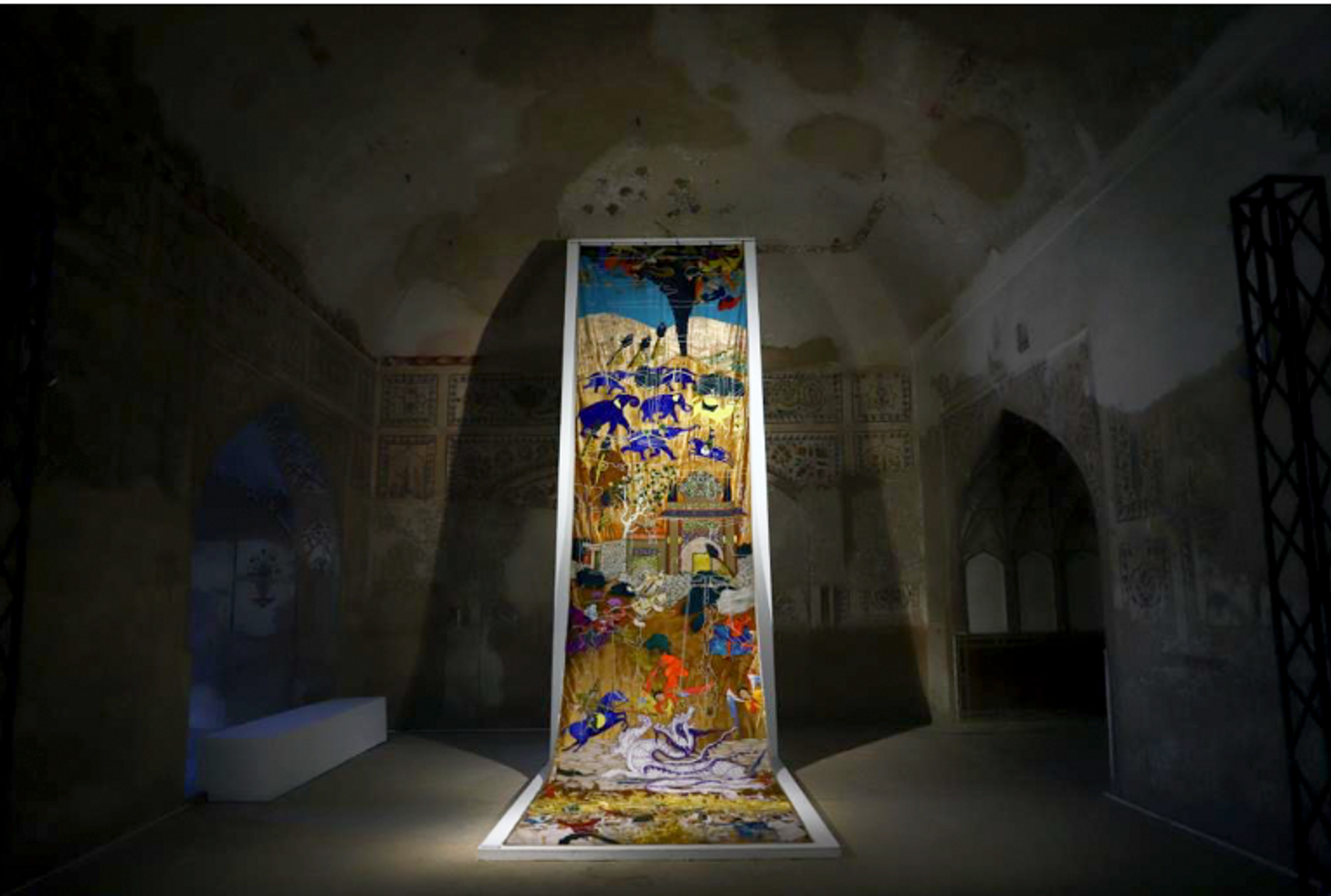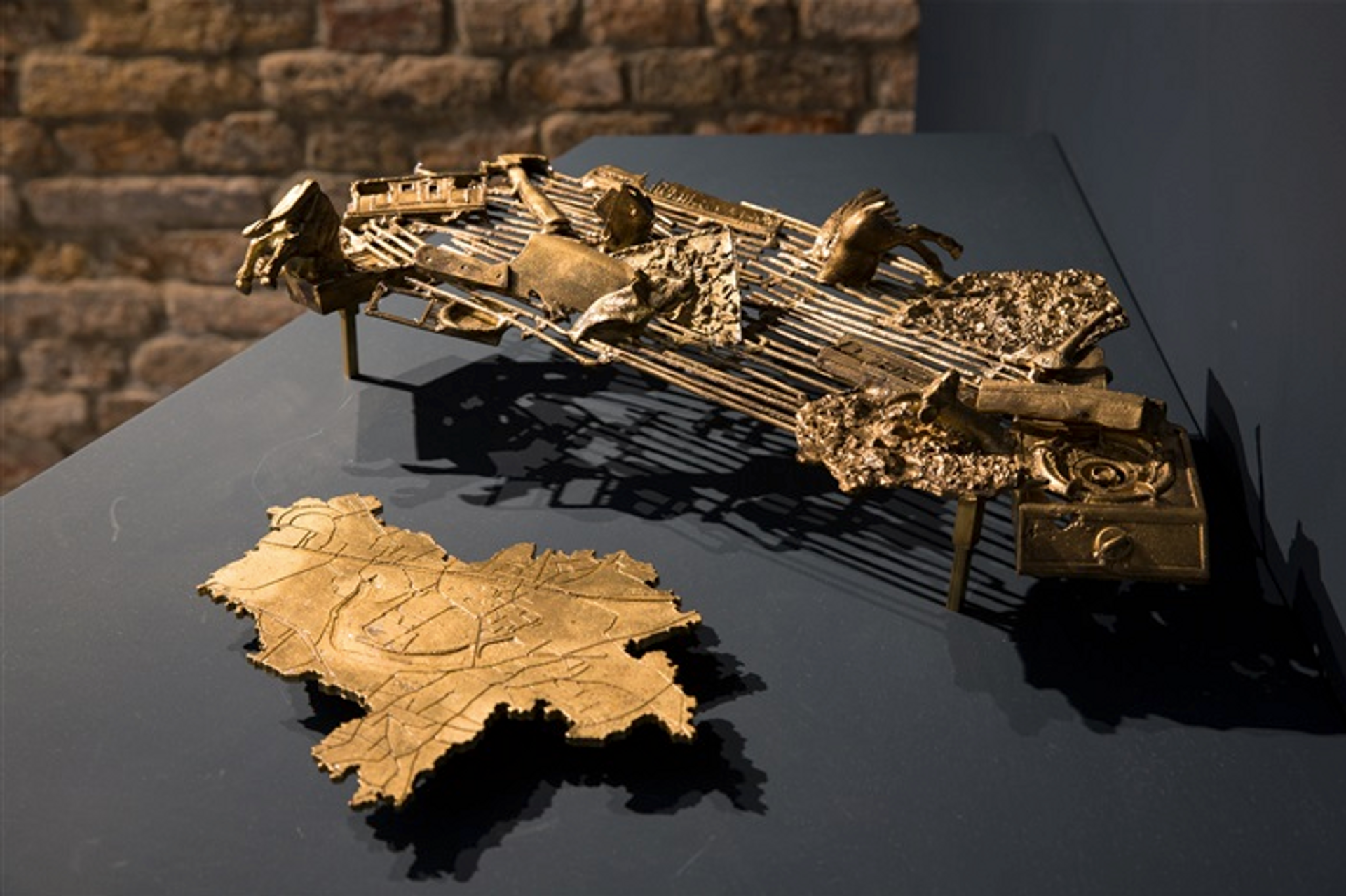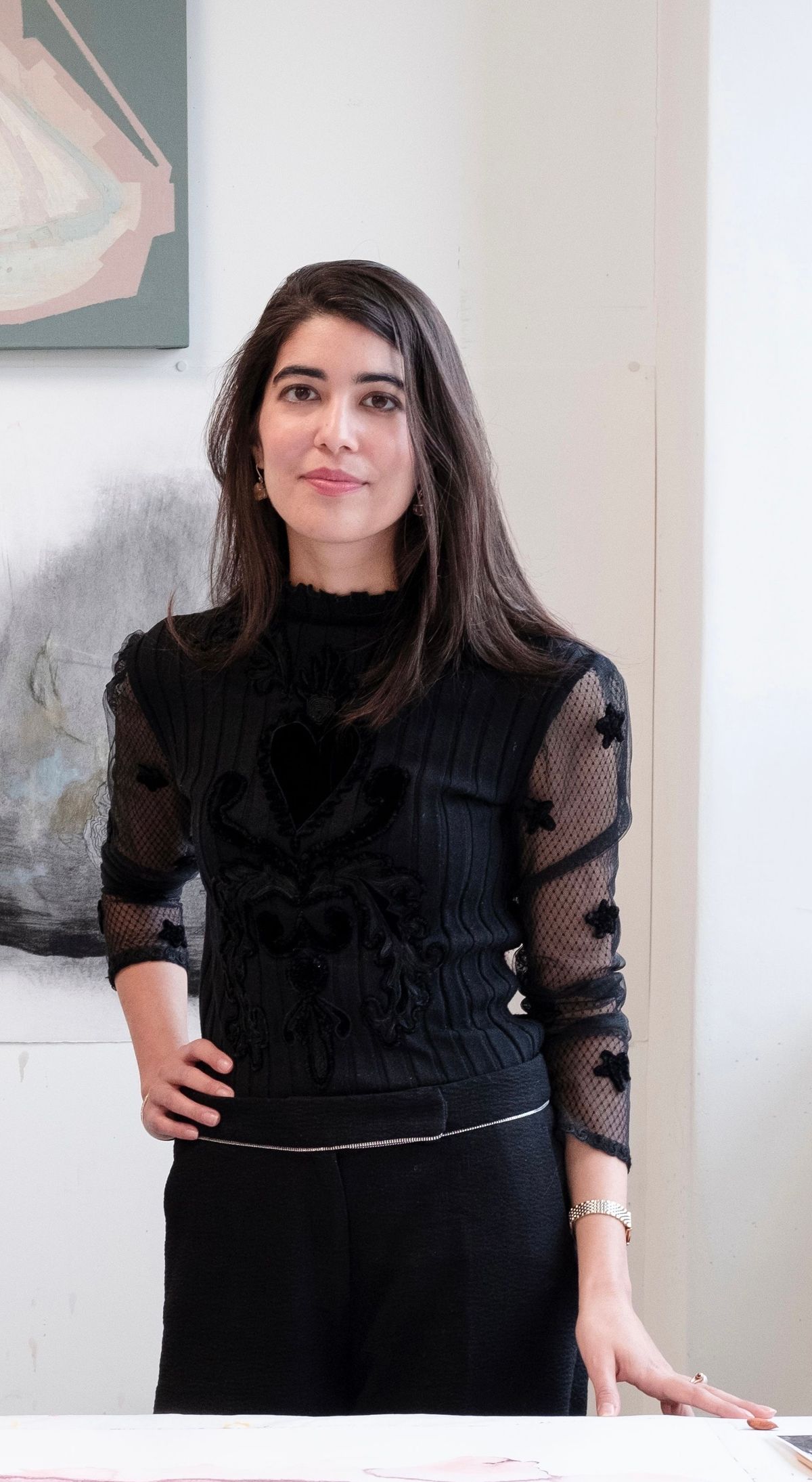Pakistan has experienced periods of tremendous upheaval in its 75 years of existence. It has risen up against past dictatorships, bans and censorship—but in doing so, its art world has become resilient and the art it produces is smart, relevant and continues to make waves.
Building upon an ancient, pre-independence artistic legacy, which had to heal and re-emerge upon partition, the contemporary art scene in the country as we know it took off in the late 2000s, when South Asian art at auction began to boom. Pakistani and South Asian collectors living abroad have also played a big role in allowing the domestic art scene to flourish, as have foreign museums showing contemporary artists from the country.
But at its core, the real strength of the art scene lies in the rich output of its artist-led community, including the stalwarts who continue to mold, champion, and guide the careers of younger artists. This is aided in no small part by the country’s significant art universities—some of the most prestigious in the subcontinent—including the National College of Art (formerly the Mayo School of Art) where successful artists continue to teach.

Khadim Ali's Invisible Border, (2020), shown at the 2020 Lahore Biennial. Courtesy of LBF
In the past two decades, this artistic community has encouraged a vital culture of public art through the advent of local biennials—most notably the Lahore Biennial, established in 2018, and the Karachi Biennial, which held its first edition in 2017. Importantly, these exhibitions are helping to explore the forgotten aesthetic architectural legacy of some of our major cities.
Turning to historic buildings which have played a role in a city’s cultural heritage has been one of the most important and enjoyable aspects of my curatorial practice. Placing contemporary art installations within the Fakir Khana Museum & Haveli, a private family run museum in Lahore’s old city, as part of the 2018 exhibition I, too, am a part of this history was a vital way for visitors to link contemporary art to Lahore’s historic legacy. The haveli has a provenance from Maharaja Ranjit Singh’s generals.
Similarly, I curated an installation and film-based exhibition, Sagar Theatre on Queen’s Road, (2020) at the subsequently (and tragically) torn down Plaza Cinema, which was originally Sagar Theatre, Lahore’s oldest theatre house. The exhibition brought up memories from visitors of handholding during first dates at the movies, attending ballroom dance classes and the overwhelming importance of protecting historic art spaces.

Naiza H. Khan's Hundreds of Birds Killed (2019) at the Pakistani Pavilion at the Venice Biennale 2019
The proudest moment in my career has been curating and organising the inaugural national pavilion of Pakistan at the Venice Biennale in 2019. This was also an important milestone for Pakistan, which after 72 years of a thriving and powerful art scene, presented Manora Field Notes, a solo exhibition of Naiza Khan. Crucially, the Pavilion of Pakistan contributed to the breadth and depth of the art that is shown at Venice, as the addition of new national pavilions creates a fuller vision of global art.
I raised the funds needed for the pavilion at Venice because the government was unable to fund it and I believed it to be vital to have Pakistan there. The state by-and-large has a long way to go with funding the visual arts—there was no national pavilion at this year's Venice Biennale, although Pakistan has had national pavilions at both the 2018 and 2021 Venice Architecture Biennales. But this is improving as government officials begin to see the importance of the local biennials and international expos and pavilions in the context of cultural tourism and trade. I always collaborate with institutions for my shows and projects to show them how important it is and to encourage them to do the same.

Naiza H. Khan's Sticky Rice and Other Stories (2019) at the Venice Biennale 2019
For many visitors, a national pavilion at the Venice Biennale provides a view into an uncharted space. I was very aware throughout the process of curating the show that it is impossibile to adequately represent an entire country’s diverse, multi-layered and dynamic art world within the confines of a national pavilion. This is why the pavilion presented a particular view into Pakistan, through Manora Island (off the coast of Karachi). This provided a point of departure from which audiences could gain an understanding of the wider region. We received a note afterwards from a woman who thanked us for the opportunity to learn about the history of the country she was raised in, and for new eyes from which to appreciate it.
Indeed, what I am continually struck by is the level of sophistication of art viewers in Pakistan. In my first major public exhibition, Two Wings To Fly, Not One: Aisha Khalid & Imran Qureshi (2017) at the National Art Gallery in Islamabad, an 8-year-old school boy narrated to me his analysis of a fairly complicated artwork. He was absolutely correct. It was a political work and the boy, like the artist, had lived through years of instability and turbulence caused by neighbouring wars, internal terrorism, and violence. That moment, a bittersweet and overwhelming confirmation of the richness, power and the desperate need for art, is a constant reminder for why I choose to do what I do.
75 years since its creation, Pakistan is not without its challenges. There is still some way to go for the country's gallery scene, for example, which needs to provide real representation and push for work to be placed in museums and in important private collections, in the way galleries do abroad. Nonetheless, the country's artists are continuing to speak their truths clearly and powerfully and make critical work that presents strong views about issues of identity, violence, society and climate change. Through their fortitude and initiative, the future of Pakistani art is golden.
• Zahra Khan is a curator based between Pakistan and the UK. She is creative director of Foundation Art Divvy, a platform that promotes contemporary art and independent film from Pakistan


